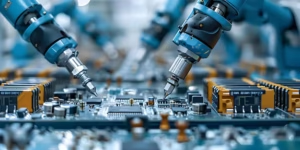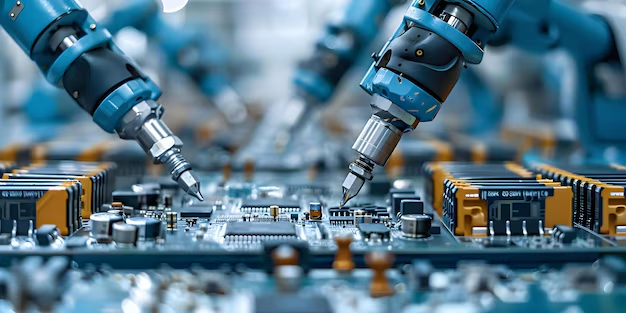Video game preservation has become a significant topic in the gaming community, especially as technology advances and older games risk being lost to time. An essential aspect of this preservation effort includes prototypes of games. Prototypes are early versions of video games, often created during the development process, that can differ significantly from the final product. Understanding how video game preservation relates to prototypes is crucial for safeguarding gaming history and culture. This article will explore the relationship between video game preservation and game prototypes, highlighting their importance and the challenges faced in preserving them.
The Importance of Video Game Preservation
Why Preserve Video Games?
Video game preservation is vital for maintaining the cultural, historical, and artistic legacy of the gaming industry. As video games have evolved from simple arcade games to complex interactive experiences, they have become an integral part of modern culture. Preserving these games ensures that future generations can experience, study, and learn from them.
Without preservation efforts, many games could be lost due to hardware degradation, software obsolescence, or changes in technology. This loss would not only affect the games themselves but also the rich history and evolution of the gaming industry.
The Role of Prototypes in Game Development
Prototypes are early versions of games, often used to test ideas, mechanics, and designs before the final product is released. They are an essential part of the game development process, allowing developers to experiment and refine their ideas. These prototypes can range from rough sketches and concepts to nearly complete games that differ only slightly from the final version.
Because prototypes represent the creative process behind game development, they offer valuable insights into the decisions and challenges developers faced. Preserving these prototypes is crucial for understanding the evolution of a game and the development process as a whole.
How Video Game Preservation Relates to Prototypes
Prototypes as Historical Artifacts
Prototypes serve as historical artifacts that offer a glimpse into the development process of video games. They reveal the evolution of game mechanics, storylines, and designs, showing how a game progressed from its initial concept to the final product. By preserving prototypes, we can study the creative journey of game developers and gain a deeper appreciation for the complexities involved in game design.
For example, a prototype might contain levels, characters, or mechanics that were later removed or altered in the final version. These elements provide valuable context and help historians and enthusiasts understand why certain decisions were made during development.
The Challenges of Preserving Prototypes
Preserving prototypes presents several challenges. Unlike finished games, prototypes are often incomplete, unstable, and not intended for public release. This makes them difficult to archive and preserve effectively. Additionally, many prototypes are stored on obsolete hardware or media, making it challenging to access and transfer them to modern formats.
Another challenge is that prototypes may not be considered valuable by developers or publishers, leading to their disposal or neglect. As a result, many prototypes are lost before they can be preserved, leaving gaps in the history of video game development.
Legal and Ethical Considerations
The preservation of game prototypes also involves legal and ethical considerations. Prototypes are often the intellectual property of the developers or publishers, and preserving or sharing them without permission can lead to legal issues. Additionally, some developers may prefer to keep prototypes private, as they may contain unfinished or unpolished content that does not reflect their final vision.
Balancing the need for preservation with respect for the rights and wishes of developers is a delicate task. Preservation efforts must navigate these challenges while ensuring that important prototypes are not lost.
The Role of Archives and Museums in Preservation
Video Game Archives
Archives play a crucial role in the preservation of video games, including prototypes. These archives collect, catalog, and store games, prototypes, and related materials, ensuring that they are preserved for future generations. Organizations such as The Strong National Museum of Play and the Video Game History Foundation are dedicated to preserving video game history, including prototypes.
These archives provide researchers, historians, and the public with access to rare and valuable materials, helping to ensure that the history of video games is not forgotten. By preserving prototypes, archives contribute to a more comprehensive understanding of the development process and the evolution of games.
Museums and Exhibitions
Museums and exhibitions also play an essential role in the preservation and presentation of video game history. By showcasing prototypes alongside finished games, museums can tell the story of a game’s development and highlight the creative process behind it. This helps to educate the public about the importance of preserving not just the final product but also the steps that led to its creation.
Exhibitions that feature prototypes allow visitors to see how games evolved and appreciate the work that goes into game development. They also emphasize the importance of preserving these early versions to maintain a complete record of gaming history.
The Future of Video Game Preservation
Advancements in Technology
As technology continues to advance, new methods for preserving video games and prototypes are being developed. Digital archiving, emulation, and cloud storage offer potential solutions for preserving fragile and obsolete media. These technologies can help ensure that prototypes are accessible and preserved for future generations.
For example, emulation allows prototypes to be played on modern hardware, preserving the experience of the game as it was during development. Cloud storage provides a secure and accessible way to store digital copies of prototypes, protecting them from physical degradation.
The Role of the Gaming Community
The gaming community also plays a vital role in video game preservation. Enthusiasts, collectors, and preservationists often take it upon themselves to find, archive, and share prototypes and other rare materials. This grassroots effort complements the work of official archives and museums, helping to ensure that no part of gaming history is lost.
Community-driven projects, such as fan-made archives and online repositories, provide valuable resources for researchers and historians. These projects also raise awareness of the importance of preserving prototypes and other aspects of video game history.
Conclusion
Video game preservation is essential for maintaining the cultural and historical legacy of the gaming industry. Prototypes of games play a crucial role in this preservation effort, offering unique insights into the development process and the evolution of games. However, preserving prototypes presents significant challenges, including legal, ethical, and technical issues.
Archives, museums, and the gaming community all contribute to the preservation of game prototypes, ensuring that these valuable artifacts are not lost to time. As technology advances, new methods for preserving prototypes will continue to emerge, helping to safeguard the history of video games for future generations.
Understanding how video game preservation relates to prototypes is key to appreciating the full scope of gaming history. By preserving these early versions of games, we can ensure that the creative processes and decisions that shaped the industry are remembered and studied for years to come.






